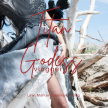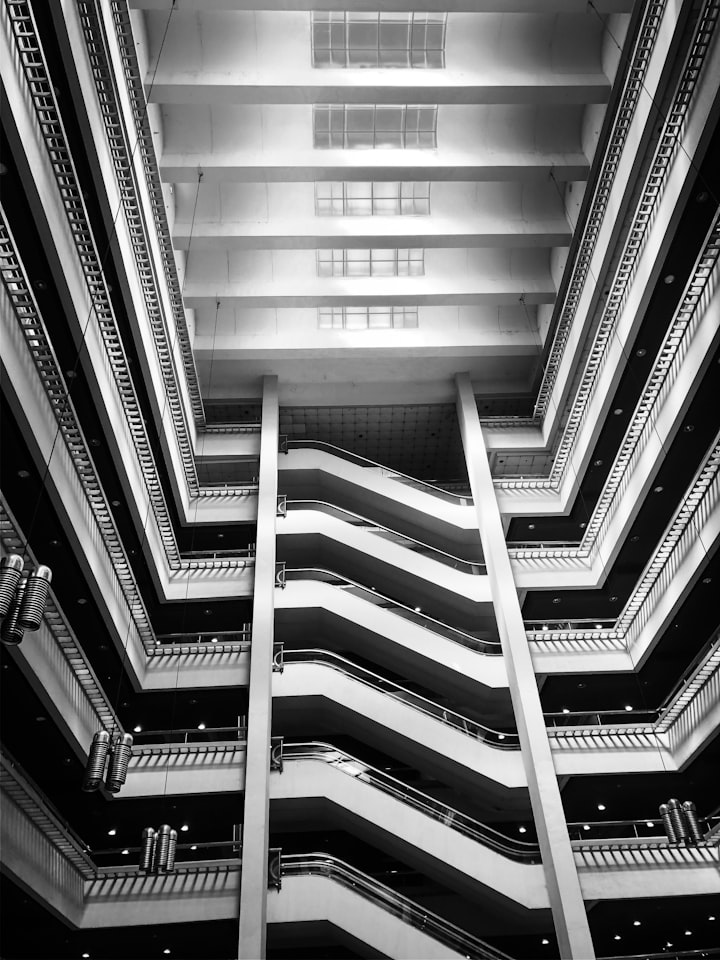The Flower Faced Owl Godess
Our salvation is through love and in love."

Once upon a time in the Realm of Sky - the dwelling-place of the Gods and the origin of the great cosmic pattern. As The doors Open to the kingdom the cosmic gateway to divinity we find the Paradise which is of course, ruled by a loving law. All places of purity to live in are governed by laws of Love . Within paradise there are many kinds of trees, with different fruits, each fruit has it's own use. We can also see beautiful flowers with unique colors which carry meaning as well as their own healing properties for our bodies to eat them and absorb their energies into us so that we may become more powerful in the physical world..
There stands in the courtyard of the paradise a beautiful tree with two strange but glorious flowers. It is ‘the tree of creation of changing leaves’ with two flowers, one kind singing sharply, and the other singing from time to time with scent. The flowers on the tree, when they are fully bloomed, make music without end that cannot be understood by a man's ear and reach the hearts of all people everywhere, at any time and any place, with great harmony as if they were giving thanks to their GODS, their creator"s, for their lives and everything else in the world, and with great love and respect, so that they are willing to give themselves up to find earthly Love .
There lived a hero who lived in the heavens above the paradise tree the prince Llew Llaw Gyffes who's mother Arianrhod had her son placed under a vow, that he would never gain a wife of earthly birth. His uncle, the trickster and magician Gwydion joins forces with the Venedotian king Math fab Mathonwy to create a woman for Lleu, out of the flowers and leaves from the paradise tree, naming her Blodeuwedd.
Blodeuwedd is married the same day she steps into this earth realm … it is this very lack of consent . One day, while Lleu is away on his earthly business, Gronw Pebr, lord of Penllyn, comes across Lleu's a fortified place whilst out hunting and falls in love with Blodeuwedd. They conspire to kill Lleu so that they can be together forever. In order to escape, Lleu leaves for his home in Nifl, but Blodeuwedd follows him there, intent on killing him herself once he enters the door of his fortress, where she has set up her bower (an enclosed bedroom). The first thing Blodeuwedd does is capture Gwydion as an unwilling prisoner, forcing him to build her a magical stone boat which will allow her to travel wherever she wants to go – no one will stop her from leaving until she returns.
But as fate would have it Lleu can only be killed if certain conditions are met, and Blodeuwedd tricks him into revealing what these conditions are. He can not be killed indoors or outdoors, on horseback or on foot. Consequently, he can only be killed whilst he has one foot on a cauldron and one on a goat the cauldron being placed on a stream bank but under a roof and by someone using a spear forged over a year and only when people are attending mass. The final lines of the tale are: "Llew was slain as he sat on the stone, one foot in a cauldron, and one foot on a goat, and no one saw him die". There is also a variant of this story (popular in England) called The Death of King Arthur, which is found in various versions such as Sir Gawain and the Green Knight, where Gawain returns to his mother's house and sees the armor of an unknown knight lying in state.
Blodeuwedd coaxes the secret from Lleu and a year later, Gronw ambushes the prince. He flings the spear at Lleu, who disappears in the form of an eagle. Gronw and Blodeuwedd now assume power, but on hearing the news of his nephew Gwydion sets out to find and cure him. He finds Lleu in the form of a wounded eagle perched in an oak tree and restores him to his form. Gronw orders that all the other cauldron-wielders be executed, but Blodeuwedd intervenes, claiming that they were only carrying out her orders: she tells them about Lleu's disappearance and offers to give up one of her two hearts which have become her life if they will help rescue him; they agree, and Lleu is restored to health by the power of their magic he had been pierced through both heart and lungs. On learning of this, Gronw plans to kill the three, but when they are nearly dead, the third and final cauldron wielder appears, seizing the opportunity. They overcome Gronw, and make him stand in the same position that Lleu occupied when Gronw flung the spear at him. Gronw is allowed to hold a stone as a shield, but Lleu throws the spear so hard that it penetrates the stone and kills Gronw. Gwydion curses Blodeuwedd, turning her into an barn owl. Etymology The name "Gronw" derives from Proto-Celtic *gromo-, meaning "sudden death" In Old Irish grugda means 'whirlwind' or'storm'.
Death and Rebirth
Although Blodeuwedd faithfully followed the formula Lleu revealed to her that was supposed to bring about his demise, he did not die, but was transformed into an eagle. This is particularly true when we consider that the three englynion death that Gwydion sings have been established by scholars as the oldest portion of the Mabinogi, and therefore may represent an encoding of an older religious belief system or ceremonial practice. In addition to these rituals, there are also many other examples of magical practices in the Mabinogi that show the possibility that the Welsh poets themselves engaged in some form of magical thinking and practice: Gwydion's birthmark (or "eye-mark")—A large black spot on his cheek that caused him trouble with women when he would try to woo them—indicates that he possesses supernatural powers, for it could be said that "it is better to live without women than with a woman who does not love you". The beards of Gwydion and Arawn were both wavy; this shows that they were under the influence of some power greater than their own. The forbidden weapon, forged by his rival during taboo times, does not kill him; rather, it turns him into an eagle. This reveals his true nature as a sky god in the Indo-European mold, connecting him with deities like Zeus, Taranis, and Jupiter. It is not surprising, therefore, that Lleu’s eagle form is found in the highest branches of an oak tree, another common symbol of sky gods. This is clearly no ordinary tree, as it bears the liminal characteristics of the Otherworld: its bark and leaves are red, and birds fly around it, but they never land there (it has no roots). The storytellers are careful to keep this paradoxical tree separate from the real world below; it appears only once at dawn, and then vanishes before sunset, before the world of man can see it, before the sun itself can find it on the horizon to guide it back home at nightfall “The Sun and the Moon”. In contrast to Llew's heroically dangerous adventures, Gwydion abides peacefully in a nest made for him by Manawyddan “Son of the Mountain” out of living trees.
Flying off in the form of an eagle could represent an ascension of the World Tree - the axis mundi or sacred center - which in Celtic cosmology connects the Three Realms of Sky, Land, and Sea: that which is above, the Future; that which is around, the Present; and that which is below, the Past. In her role as a Goddess of Sovereignty, Blodeuwedd i-rhyddheudol represents the sovereignty of the queen over the king's subjects - she governs the land from above, and her husband rules the kingdom from below, so the eagle represents the union of the king and his wife to form a child in whom all three realms are united; it is an eternal union of the king with his spouse, for they remain joined forever by their love, regardless of time and place (a link to Blodeuwedd's triple heritage from Lludd, Llywarch and Mabon.
As a more specific interpretation of this particular aspect of Celtic mythology, the eagle may be seen as a symbol of a redeemer ,
She has essentially constructed a portal for him that invokes the Otherworld through the sacred power of three. The top of the tree may represent the Realm of Sky - the dwelling-place of the Gods and the origin of the great cosmic pattern. Perhaps Lleu was working to claim the truth of his divinity there, by integrating the lessons that Arianrhod had set be- fore him, a process somewhat circumvented by Gwydion as he had bypassed all of her tynged on Lleu’s behalf. The second level is where we would expect to find Llud, representing the World of Man, but there is no obvious association with that realm here, either in its details or its symbolism; it seems that Lleu is not yet ready to enter this world himself, and has therefore sent out an agent to do so on his behalf, while he remains ‘above ground’, perhaps even more comfortably than before, since he will soon have someone else to protect him from danger.Whatever the purpose this process may have served, it is clear that Lleu en gages in deep healing. He releases what is wounded and rotten, and uses his wings to shake off what no longer serves him, "I bring this offering To the Dark Lord and the Bright Lady, To all that are sent out from the Heavenly Home and those who dwell below," he calls out to the Goddesses, "In this hour I open my heart." While he does not describe what he feels about the results of this ritual, we can assume that it has been successful: The pains and torments that he felt earlier are now gone, and in their place comes a sense of joy and peace such as he has never known before.
To the nexus of changes The threshold between The resolution of the irreconcilable That heals what has always been whole The old order must ever fade away To herald that which comes To lay a pathway for what is new To travel along the ley lines of life’s eternal strand To see past our night into your day So we can be one, again Not just as the living but as the dead .
Twisting and endless, spun by the spindle-bones of death Until the leaves fall, carpeting the wood with deepest red Both womb-blood and placenta To birth the returning king This, then, is Sovereignty’s gift Sovereignty’s lesson taught to thee: to be the master of your own destiny
Sovereignty’s price
The balance of time, poised on a razor’s edge Makes room for the offering the oath the opening The whole and holey Holy stone The body of the maiden, he pierces it Breaking through the blue-grey slate The shuddering slab of protection The fear-wrought shield of doubt Tombstone and gravestone and memory’s marker Where lovers unite and Warriors fight and Eagles take flight Memory is where we find ourselves, Clarity, a place to start, Stability, the ability to stand firm Sacrifice, you see, is not giving up without a fight, but instead is Putting your heart into it, and then taking something back The sky, still the sky, that which holds us aloft I am one who has watched you all from my perch I have seen you all in the beginning And I will be here to watch as you end I will be here to hold up your bodies To the light, to keep you there, But first, to make sure they do not fall, If you want me to sing, I’ll bring tears If you want me to say things I do not mean, I’ll say them anyway.
The queen awaits him on the other side First mourning, then knowing that Like that first morning They are thrice united, but all too soon parted Until she returns to him on owl’s wings While he returns a stag of seven tines, Dark god Dark wood Dark eyes And then, they are one On the banks of the Cynfael River And in that moment of balance He slips through her threshold - And a new king is crowned... and crowning.Celtic cosmology connects the Three Realms of Sky, Land, and Sea: The realm of sky is ruled by a sovereign God or Goddess, called Cernunnos The realm of land is ruled by a king or queen, whom we call Cerridwen and the realm of sea is ruled by a prince or princess, whose name is Caer Gwydion A trilogy of stories about King Mardoc follows: It’s night now, and a king lies dying. Impossible circumstances that would bring about his death. By manifesting a place of triple liminality - placing him neither indoors nor outdoors, neither on foot nor on horseback, and on the bank of a river - she has essentially constructed a portal for him that invokes the Otherworld through the sacred power of three. The top of the tree may represent the Realm of Sky - the dwelling-place of the Gods and the origin of the great cosmic pattern. The base is the realm of earth and matter; the middle part of the tree, the realm of mortals and smaller beings - including an "invisible" house in which he resides (we see only the trunk) which he can come to at any time when he wishes to leave the physical body, and the top again represents the realm of the Gods where he will find his eternal reward if he serves them well - just as the invisible ladder represented the spiritual ladder or the path of salvation for all smaller lesser man .
About the Creator
Titan Godess
Researcher Poet Artist Tea blender dancer Alchemist My greatest Blessing is to be Mother Of 4 Sons
They make my heart sing.






Comments
There are no comments for this story
Be the first to respond and start the conversation.